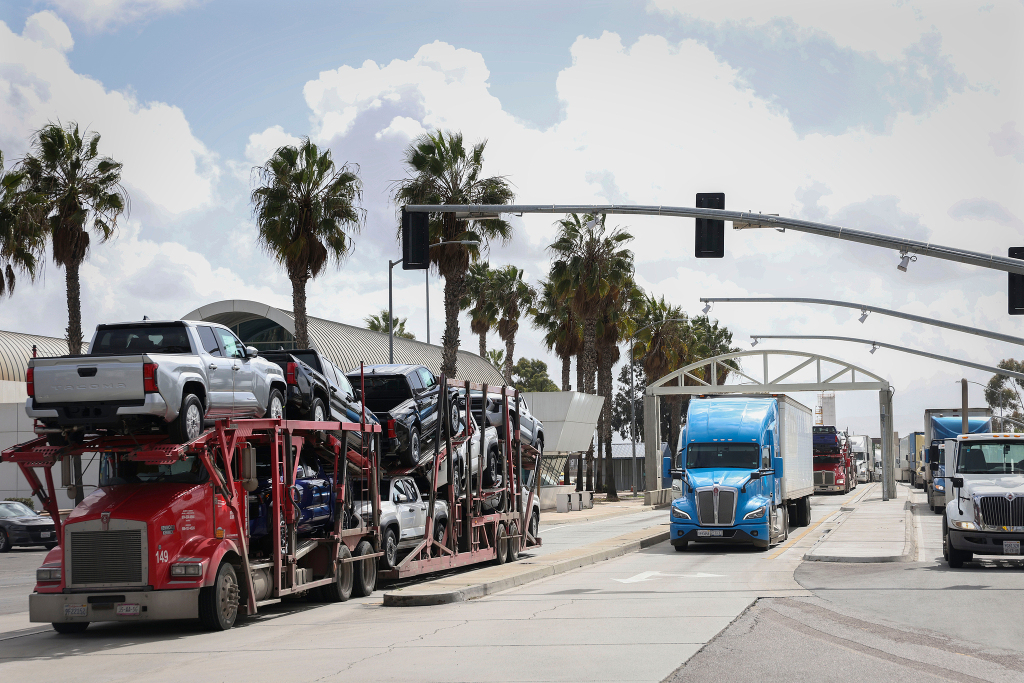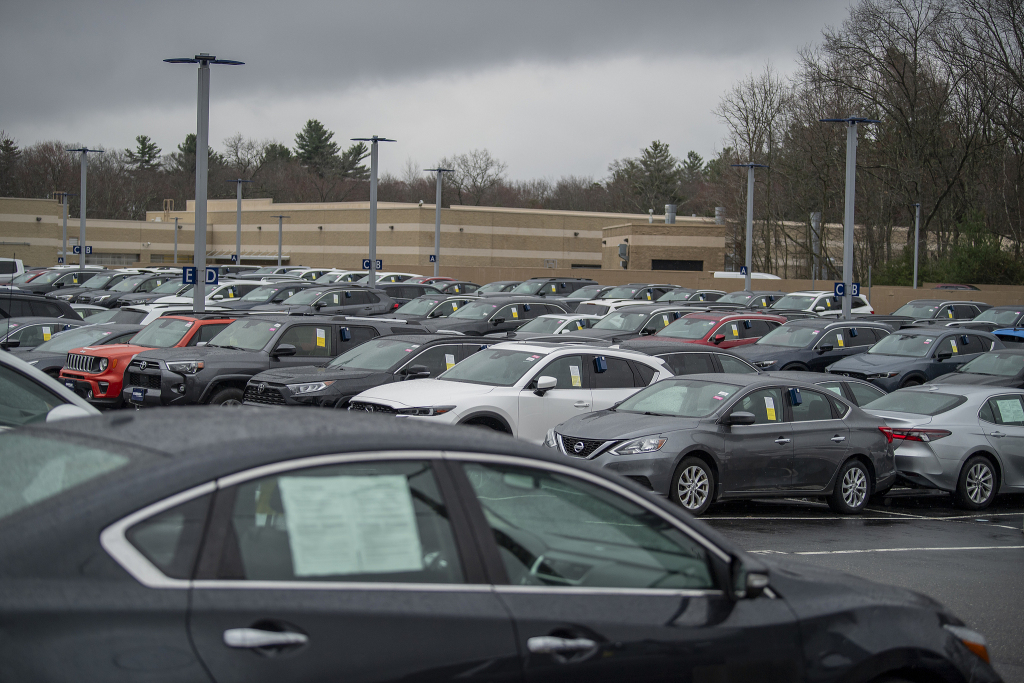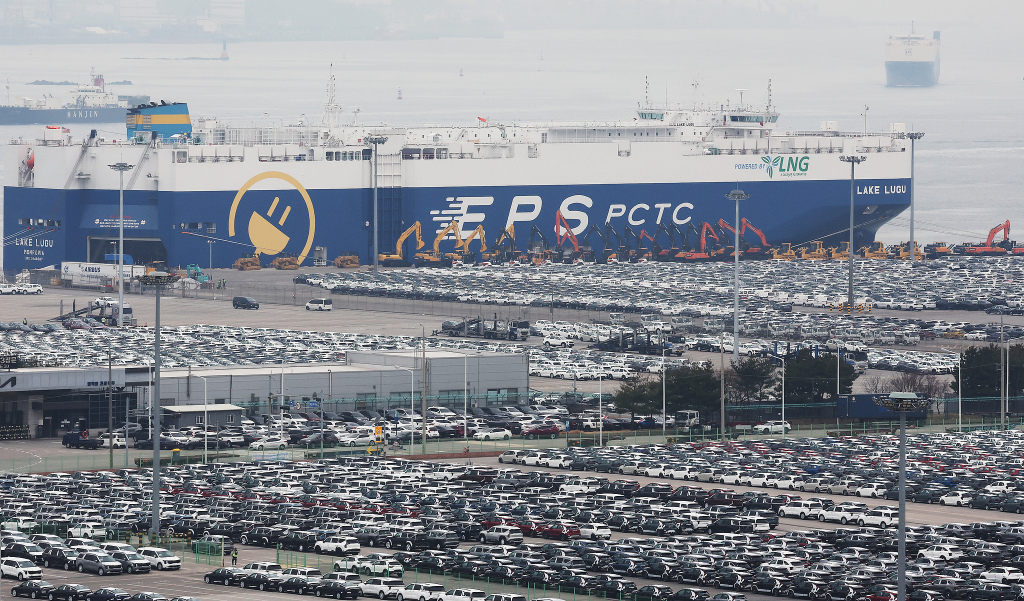
When the Trump administration announced a 25% tariff on all imported cars and parts starting April 3, the roar of Detroit factories was mixed with the sound of the fission of the global economic system.

On February 14, 2025, local time, in San Diego, California, USA, a semi-trailer truck entered the Otay Mesa entry point on the U.S.-Mexico border.
A double-edged sword stabbing the global automotive industry chain
In 2024, the sales volume of new cars in the United States will be about 16 million, of which about 8 million will be imported cars, accounting for about 50% of the total sales volume. Many American brand cars such as GM and Ford sold in the United States are assembled in Mexico and Canada, and most of the parts come from European and Asian countries.
On the automobile assembly line in Michigan, the last screw installed by the worker may come from Germany, while the paint applied may come from Japan. This kind of sophisticated cooperation of transnational division of labor has been torn open by the additional 25% tariff.
AlixPartners, a consulting firm, estimates that if tariffs are imposed on parts, the cost of each US-made car will increase by $4,000, and the annual cost will reach $40 billion. Take Hyundai Motor Group as an example. Of the 1 million cars it sells in the US, 56% need to be imported from South Korea, and the cost of each car will increase by $5,000 to $7,500.
The more far-reaching impact lies in the irreversibility of supply chain restructuring. Cox Automotive predicts that if tariffs take effect, the daily output of US factories will decrease by about 20,000 vehicles, and the production capacity will drop by 30%. This shrinking production capacity forces automakers to re-evaluate their global layout, but the cost and time cost of relocating production lines are difficult to balance. Ford needs to spend billions of dollars and take years to move its production lines back to the United States, and Hyundai Motor's newly announced $21 billion investment plan in the United States will not ease export pressure in the short term.
Trade barriers created by tariffs are distorting market competition. According to data from the American Automobile Association (AAA), the average selling price of imported cars will increase by 8%, and domestic cars will also increase by about 3% due to rising component costs. This price leverage may change consumer choices, and consumers may turn to lower-priced used cars or domestic brands, leading to a decline in sales of imported cars. The National Automobile Dealers Association (NADA) predicts that overall sales may fall by 10%.
American automakers with a high degree of localization may seem to be the winners, but in fact they may not be. Tesla is immune to the impact of vehicle tariffs because it is produced entirely in the United States, but 65% of its parts rely on overseas suppliers. If semiconductor tariffs are implemented, the cost of each vehicle will increase by US$188 to US$219. This cost transmission effect makes the so-called local advantage a "fortress built on the beach."
Tariffs triggered a butterfly effect. The European Union, Japan, and South Korea quickly announced countermeasures.
Canada will set up a C$2 billion "Strategic Response Fund" to protect its auto industry threatened by U.S. tariffs; French Minister of Economy and Finance Eric Lombard will begin formulating "countermeasures" against U.S. goods in mid-April; South Korean Minister of Trade, Industry and Energy Ahn Deok-geun said he will use all communication channels to communicate with the U.S. government and provide support for companies to carry out stable business activities; Japanese Prime Minister Shigeru Ishiba promised to take comprehensive measures, including financing, to protect local companies threatened by tariffs.
How can China's supply chain break through?
According to the China Passenger Car Association, China will export 116,000 cars to the United States in 2024. Judging from this figure, the obstruction of car exports to the United States has little impact on the export business of Chinese brands, while American car companies that produce in China are more seriously affected. For example, the cost of American-made autonomous driving modules used by Tesla's factories in China has surged, forcing the company to launch a parts replacement plan. This replacement is not an overnight achievement, and Tesla will have to bear huge cost pressure in the short term.
In addition, GM's Buick Envision and Lincoln Navigator SUVs are both assembled in China and exported to the US market. The former sold about 22,000 units in the US in the first half of 2024, and the latter sold 17,500 units. If China completely bans the export of related products, GM and Ford will face hundreds of millions of dollars in direct revenue losses in the short term.
Ford's models produced in China are not only supplied to the local market, but also exported to other regions through the global division of labor network. Once China's supply is interrupted, automakers will need to urgently adjust their production lines, which may cost hundreds of millions of dollars to rebuild their local or third-country supply chains. This process will significantly increase operating costs and delay product delivery cycles.
In the field of new energy vehicles, American automakers such as General Motors' electric vehicles rely on lithium iron phosphate battery materials supplied by China. The export control measures implemented by China since January 2025 cover core raw materials such as lithium compounds and lithium iron phosphate, resulting in a "food shortage" crisis for domestic battery production lines in the United States.
An analysis by the Peterson Institute for International Economics points out that rebuilding a battery supply chain independent of China will take at least 5-8 years and tens of billions of dollars in investment.
From trade war to supply chain reshaping
The global automotive industry is currently experiencing unprecedented turmoil. The United States is trying to reshape the global value chain through tariffs, but it has ignored the stickiness of industrial division of labor.
Tariffs push up the prices of imported goods, exacerbate inflationary pressures, and may trigger the risk of a global economic recession. But in the long run, this pain is giving rise to a new industrial ecology. Global automakers are forced to restructure their supply chains, and emerging markets such as Southeast Asia and India may become new production bases. Although this transfer brings short-term production cost reductions, cross-border trade becomes more complex and the stability of the global supply chain faces challenges.
Under the shadow of tariff game, multilateral cooperation has become a new path to break the impasse. Under this trend, the right approach may be hidden in the report of the Davos Forum - the future of globalization is not a question of whether to choose or not, but how to manage its evolution wisely.


